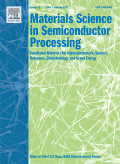
MATERIALS SCIENCE IN SEMICONDUCTOR PROCESSING
Scope & Guideline
Transforming Knowledge into Cutting-Edge Applications
Introduction
Aims and Scopes
- Semiconductor Materials Development:
Research on the synthesis, characterization, and optimization of semiconductor materials, including novel materials such as perovskites, quantum dots, and transition metal dichalcogenides. - Photocatalytic Applications:
Investigation of photocatalytic processes and materials aimed at environmental remediation and energy conversion, focusing on the degradation of pollutants and hydrogen production. - Device Fabrication and Characterization:
Studies addressing the fabrication techniques and performance evaluations of semiconductor devices, including photodetectors, solar cells, and transistors. - Nanostructured Materials:
Exploration of nanostructured materials and their unique properties for applications in sensing, energy storage, and conversion, emphasizing their role in enhancing device performance. - Theoretical and Computational Modeling:
Utilization of computational methods such as density functional theory (DFT) to predict and analyze the electronic, optical, and thermoelectric properties of novel materials.
Trending and Emerging
- Hybrid and Composite Materials:
There is a growing trend towards the development of hybrid materials that combine the properties of different materials for improved performance in semiconductor applications. - Sustainable and Green Technologies:
Research focusing on environmentally friendly materials and processes, including the use of bio-derived materials and green synthesis methods, is gaining momentum. - Machine Learning and AI in Materials Science:
The incorporation of machine learning and artificial intelligence for material discovery, optimization, and research efficiency is becoming a significant area of exploration. - 2D Materials and Heterostructures:
The exploration of two-dimensional materials, such as graphene and transition metal dichalcogenides, and their heterostructures is rapidly increasing, particularly for optoelectronic applications. - Advanced Photonic and Electronic Devices:
Innovations in photonic and electronic devices, including the development of next-generation sensors and transistors, are emerging as a key focus area.
Declining or Waning
- Traditional Silicon Technologies:
Research focusing on conventional silicon processing techniques is becoming less prominent as newer materials and methods gain traction in the semiconductor field. - Bulk Material Studies:
There is a noticeable decrease in studies centered around bulk materials, as the emphasis shifts towards nanostructured and hybrid materials that offer enhanced properties. - Laboratory Scale Research:
Research that remains confined to laboratory-scale experiments without considering scalability and industrial applications is seeing reduced interest.
Similar Journals
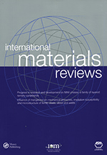
INTERNATIONAL MATERIALS REVIEWS
Pioneering Insights for Material Science ProfessionalsINTERNATIONAL MATERIALS REVIEWS, published by SAGE Publications Inc, is a leading journal dedicated to the comprehensive analysis of contemporary research in the fields of materials chemistry, mechanical engineering, mechanics of materials, and the study of metals and alloys. With an impressive impact factor and a Q1 ranking across multiple categories such as Materials Chemistry and Mechanical Engineering in 2023, it ranks amongst the top journals for innovative materials research. The journal has a long-standing history since its inception in 1987 and continues to serve as a crucial resource for academics and professionals alike. Although it is not open access, it is renowned for its rigorous peer-review process and its commitment to disseminating high-quality materials science research globally. Researchers, students, and industry professionals benefit greatly from the journal's insightful reviews, both for the advancement of theoretical knowledge and practical applications within the fast-evolving materials field.

POWDER METALLURGY AND METAL CERAMICS
Transforming Ideas into Cutting-edge Material SolutionsPOWDER METALLURGY AND METAL CERAMICS is a prestigious journal published by Springer, dedicated to advancing the field of powder metallurgy and the development of metal ceramics. With an ISSN of 1068-1302 and an E-ISSN of 1573-9066, this journal includes significant research contributions that explore innovative developments in materials science and engineering. Since its inception in 1993, it has garnered attention within multiple disciplines, consistently ranking in the Q2 and Q3 quartiles across categories such as Metals and Alloys, Ceramics and Composites, and Mechanics of Materials. The journal offers valuable insights into the synthesis, characterization, and applications of advanced materials, making it an essential platform for researchers, professionals, and students aiming to stay at the forefront of technological advancements in this dynamic field. Although not currently offering open access, the journal remains a critical resource for disseminating high-quality research that influences both academia and industry.

SEMICONDUCTORS
Innovating the future of electronic and optical materials.SEMICONDUCTORS, published by PLEIADES PUBLISHING INC, is a prominent journal that provides a platform for researchers and professionals in the fields of Atomic and Molecular Physics, Condensed Matter Physics, and Electronic, Optical and Magnetic Materials. With an ISSN of 1063-7826 and an E-ISSN of 1090-6479, the journal has been diligently disseminating knowledge since its inception in 1996 and continues to pave the way for innovative research until 2024. Although currently unclassified in the Open Access model, its influence is underscored by its rankings in Scopus, where it ranks in the 21st-22nd percentile across critical scientific categories. SEMICONDUCTORS serves as an essential resource for cutting-edge research, fostering a greater understanding of semiconductor materials and their applications, thereby assisting the scientific community in pushing the boundaries of technology and innovation.

Transactions on Electrical and Electronic Materials
Pioneering Research for Tomorrow's TechnologyTransactions on Electrical and Electronic Materials, published by Springer, is a distinguished journal aimed at advancing the fields of electrical and electronic engineering, as well as electronic, optical, and magnetic materials. With an ISSN of 1229-7607 and an E-ISSN of 2092-7592, this journal is vital in disseminating impactful research and innovations, providing insights and significant findings that cater to both academia and industry. Holding a Q3 ranking in the categories of Electrical and Electronic Engineering and Electronic, Optical and Magnetic Materials, it serves as a reputable platform for sharing research that influences ongoing developments in these critical areas. The journal's converged years from 2011 to 2024 signify its commitment to providing a comprehensive review of technological advancements. Located in New York City, it appeals to a global audience of researchers, professionals, and students, enhancing their understanding of current trends and practices within the domain.

Nano Express
Driving research excellence in nanotechnology and materials.Nano Express is an esteemed open-access journal published by IOP Publishing Ltd, dedicated to advancing research in the fields of nanotechnology and materials science. Since its launch in 2020, the journal has swiftly established itself as a vital resource for researchers and professionals, garnering significant recognition in various domains, including biomaterials, electronic, optical and magnetic materials, and polymers and plastics. With a commendable categorization in Scopus quartiles, it ranks in Q2 for Electronic, Optical and Magnetic Materials, and maintains a top percentile in several others, exemplifying its commitment to high-quality research dissemination. Located in the United Kingdom, this journal fosters a global dialogue among experts and newcomers alike, facilitating open access to innovative research that drives the future of nanotechnology. By offering a platform for groundbreaking studies and reviews, Nano Express aims to bridge the gap between theoretical understanding and practical application, championing the development of next-generation materials that have the potential to transform various industries.
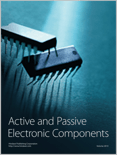
Active and Passive Electronic Components
Unlocking Innovations in Electronic Component ResearchActive and Passive Electronic Components, published by HINDAWI LTD, stands as a significant open-access journal dedicated to the fields of electrical and electronic engineering, as well as materials science, particularly focusing on electronic, optical, and magnetic materials. Established in 1985, this journal aims to disseminate high-quality research, experimental studies, and theoretical analyses that contribute to advancements in electronic component technology and applications. Despite its recent category quartile rankings of Q4 in both relevant fields as of 2023, the journal plays an essential role in providing open access to critical findings that may benefit diverse sectors including telecommunications, consumer electronics, and renewable energy systems. Researchers, professionals, and students are encouraged to engage with the latest studies published in this journal, which has seen periods of publication interruption yet remains dedicated to fostering innovative research in its scope. With a commitment to open access, articles are freely available, promoting wider dissemination and collaboration within the scientific community.
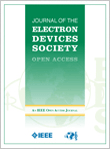
IEEE Journal of the Electron Devices Society
Unlocking Potential in Electron Device DiscoveriesIEEE Journal of the Electron Devices Society is a premier open-access publication dedicated to the advancement of knowledge in the field of electron devices. Published by the IEEE Institute of Electrical and Electronics Engineers Inc, this journal has been contributing essential research to the scientific community since 2013, reflecting its commitment to fostering innovation and development in the industry. With a notable impact factor that places it in reputable category quartiles—Q3 in Biotechnology and Q2 in both Electrical and Electronic Engineering and Electronic, Optical, and Magnetic Materials—this journal stands as a respected outlet for cutting-edge studies. Positioned among the top-ranked journals in its respective categories, including a Scopus rank of #90 in Electronic, Optical and Magnetic Materials, it serves as a vital resource for researchers, professionals, and students alike. The open-access model enhances the journal's accessibility, allowing for widespread dissemination of crucial findings and innovations in electron device technologies. Whether you are engaged in academia or industry, the IEEE Journal of the Electron Devices Society is essential for remaining at the forefront of advancements in this dynamic field.

Applied Physics Express
Unveiling Breakthroughs in Applied PhysicsApplied Physics Express, published by IOP Publishing Ltd, is a leading journal that focuses on the rapid dissemination of research in applied physics, aimed at both academia and industry professionals. Operating from Japan, this prestigious journal features a broad scope within the domains of engineering and physics and astronomy, earning a significant place in the research community, as evidenced by its Q2 ranking in both disciplines for 2023. With a commitment to excellence, Applied Physics Express provides a platform for authors to share their innovative findings, promoting collaboration and advancement in the field. Its impact is further highlighted by its solid performance in Scopus rankings, featuring prominently within the engineering and physics categories. Although the journal does not currently operate under an open access model, it is dedicated to ensuring that high-quality research is accessible to its readers. Researchers, students, and professionals can find invaluable insights and cutting-edge studies within its pages, making it an essential resource for those engaged in applied physics and its interdisciplinary applications.
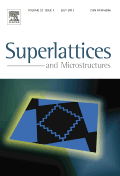
SUPERLATTICES AND MICROSTRUCTURES
Advancing the frontiers of materials science.SUPERLATTICES AND MICROSTRUCTURES is a premier journal dedicated to the exploration and dissemination of cutting-edge research in the fields of Condensed Matter Physics, Electrical and Electronic Engineering, and Materials Science. Published by Academic Press Ltd - Elsevier Science Ltd, this journal has established itself as an important platform for scholars and industry professionals to share their findings related to the design, fabrication, and application of superlattices and microstructured materials. With a commendable impact factor reflected in its rankings—positioned within the top quartile in Physics and Astronomy as well as Electrical and Electronic Engineering—it offers high visibility and influence in the academic community. The journal has covered significant contributions from 1985 to 2022, although access options have transitioned, making staying current essential for researchers and practitioners alike. This journal not only serves as a repository of knowledge but also fosters collaboration and innovation in materials science and related disciplines.

International Journal of Applied Glass Science
Pioneering Research in Glass Science and ApplicationsThe International Journal of Applied Glass Science, published by Wiley Periodicals, Inc, is a leading scholarly journal in the field of materials science, particularly focusing on the applications and innovations in glass science. Since its inception in 2010, the journal has served as a vital platform for disseminating high-quality research and advancing knowledge within the community, maintaining a respectable Q2 ranking in the Materials Science (Miscellaneous) category as of 2023. With an ISSN of 2041-1286 and E-ISSN of 2041-1294, it continues to attract a diverse array of manuscripts that explore fundamental and applied aspects of glass technology and its countless applications. Scholars and professionals benefit from the journal’s commitment to transparency and accessibility, even in the absence of an open access model, thereby reinforcing its relevance in an evolving academic landscape. The journal is positioned to be an influential resource for researchers, professionals, and students keen to stay at the forefront of glass science developments.